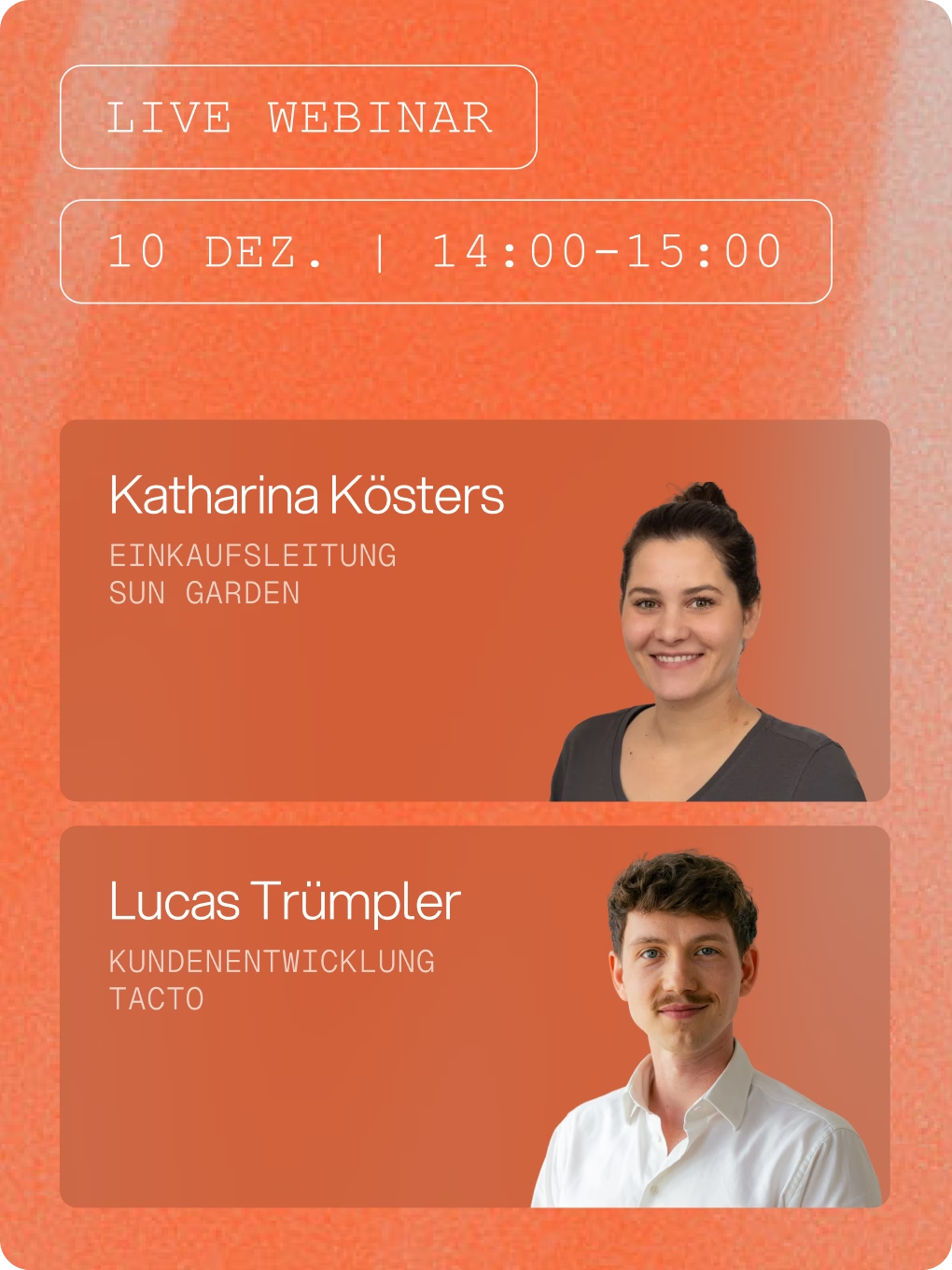Procurement Glossary
Storage: definition, processes and strategic importance in Procurement
November 19, 2025
Putaway is a central process in procurement logistics that involves the proper receipt and placement of goods in the warehouse. It forms the link between goods receipt and storage and has a significant influence on the efficiency of the entire supply chain. Find out below what putaway means, which methods are used and how current developments affect this process.
Key Facts
- Warehousing includes all activities from goods receipt to final storage placement
- Modern systems use automated processes and barcode/RFID technology for greater accuracy
- Optimized storage strategies reduce throughput times by up to 30%
- The choice of putaway strategy has a direct impact on picking efficiency
- Integration with WMS systems enables real-time tracking and control
Contents
Definition: Storage - meaning and key message
Putaway is the systematic process of receiving, checking and placing goods in their designated storage locations after goods receipt.
Core elements of storage
The storage process comprises several consecutive steps:
- Goods receipt and identification of incoming goods
- Quality check and quantity comparison with order data
- Systematic recording and booking in inventory management
- Storage location determination according to defined strategies
- Physical placement and final documentation
Storage vs. goods receipt
While goods receipt comprises the mere acceptance and initial inspection, putaway involves the complete integration of the goods into the warehouse system. It closes the gap between delivery and available stock.
Importance of putaway in Procurement
Efficient putaway is crucial for Procurement , as it determines the lead time from ordering to availability. It directly influences inventory management and therefore the planning reliability for downstream processes.
Methods and procedures
Various storage strategies and methods allow the warehouse processes to be optimized according to the type of goods and operational requirements.
Strategic storage procedures
The choice of storage strategy depends on factors such as turnover rate, goods value and available space:
- Chaotic storage for maximum space utilization
- Fixed locations for frequently used items
- ABC-oriented zoning according to access frequency
- FIFO-compliant placement for perishable goods
Technical aids and automation
Modern storage systems use various technologies to optimize processes. Warehouse management systems (WMS) control the optimal allocation of space, while barcode scanners and RFID technology increase the accuracy of data capture. Automatic replenishment can support the determination of storage locations.
Quality assurance during storage
Systematic inspection procedures ensure stock quality right from the storage stage. This includes visual inspections, spot checks and the documentation of deviations. Integration into the Inventory Health Dashboard enables continuous monitoring of putaway quality.

Tacto Intelligence
Combines deep procurement knowledge with the most powerful AI agents for strong Procurement.
Important KPIs for storage
Key figures for storage enable the objective evaluation of process efficiency and form the basis for continuous improvements.
Lead time key figures
The time from goods arrival to final storage is a key indicator of process efficiency. Typical target values are 2-4 hours for standard items. The measurement is differentiated by Categories and takes into account differences in complexity. Delays in the throughput time can indicate bottlenecks or process weaknesses.
Accuracy and quality indicators
Putaway accuracy measures the percentage of correctly placed items and should be at least 99.5%. In addition, misplacement rates and rework rates are recorded. These key figures correlate directly with the efficiency of downstream picking processes and influence the delivery service level.
Productivity and cost indicators
Storage performance per employee and hour as well as costs per stored unit show the economic efficiency. Benchmarks vary depending on the industry and degree of automation. The link with warehouse key figures enables a holistic evaluation of warehouse performance and supports investment decisions for optimization measures.
Risks, dependencies and countermeasures
Putaway processes harbor various risks that can affect the entire supply chain and require appropriate preventive measures.
System failures and technical faults
IT system failures can completely paralyze storage processes and lead to delivery delays. Redundant systems, regular backups and manual fallback procedures are essential. The dependence on inventory management systems requires special attention to system maintenance and security.
Inventory inaccuracies and misplacements
Incorrect storage leads to search times, stock discrepancies and service level problems. Regular cycle counting procedures and dual control principles for critical items minimize these risks. Employee training and clear work instructions are further important preventative measures.
Capacity bottlenecks and overload
Unforeseen delivery quantities or seasonal peaks can overload storage capacities. Flexible personnel planning, temporary storage space and the integration of consumption forecasts into capacity planning help to minimize risks. Contingency plans for overload situations should be tested regularly.
Practical example
An automotive supplier optimized its storage processes by implementing an AI-supported WMS system. The system analyzes incoming deliveries and automatically determines optimal storage locations based on turnover rates and picking routes. The integration of RFID technology has increased the accuracy of data capture to 99.8%. The throughput time from goods receipt to storage has been reduced from an average of 6 to 2.5 hours.
- Implementation of an adaptive storage bin allocation algorithm
- Training employees on new scanning processes
- Continuous monitoring via dashboard key figures
Current developments and effects
Digitalization and new technologies are fundamentally changing warehousing processes and opening up new opportunities to increase efficiency and reduce costs.
AI-supported storage optimization
Artificial intelligence is revolutionizing warehousing through predictive analytics and machine learning. AI systems analyze historical data, seasonality and consumption patterns to predict optimal storage locations. This reduces search times during picking and improves the overall efficiency of the warehouse by up to 25%.
Robotics and fully automated systems
Autonomous mobile robots (AMR) and automated storage systems are increasingly taking over physical storage tasks. This development leads to a reduction in manual activities and enables 24/7 availability of storage processes. Integration with replenishment systems optimizes the entire replenishment control process.
Sustainability and green logistics
Environmental awareness shapes modern warehousing strategies through energy-efficient storage technologies and optimized transport routes. Companies are implementing sustainable packaging concepts and reducing their CO2 footprint through intelligent route planning. The combination with just-in-time concepts also minimizes stock levels and resource consumption.
Conclusion
Putaway is a critical success factor for efficient procurement processes and has a significant impact on overall supply chain performance. Modern technologies such as AI and automation open up new optimization potential, but require strategic planning and investment. Companies that systematically develop their putaway processes create sustainable competitive advantages through reduced costs and improved service levels. The integration of various technologies and the continuous measurement of relevant KPIs form the basis for long-term success.
FAQ
What is the difference between goods receipt and putaway?
Goods receipt comprises the acceptance and initial inspection of the delivery, while putaway covers the entire process up to final placement in the warehouse. Putaway includes system recording, storage location determination and physical placement and makes the goods available for downstream processes.
Which storage strategy is the best?
The optimal strategy depends on factors such as item variety, turnover rate and available space. Chaotic storage maximizes space utilization, while fixed locations for A-items speed up picking. Hybrid approaches combine different strategies depending on the Category and often offer the best balance between efficiency and flexibility.
How can storage accuracy be improved?
You can achieve improvements through barcode or RFID technology, the dual control principle for critical items and regular employee training. Systematic workplace design, clear process documentation and continuous quality controls reduce sources of error. Modern WMS systems with plausibility checks also help to prevent errors.
What role does AI play in modern storage?
AI optimizes storage location decisions by analyzing consumption patterns, seasonality and picking routes. Machine learning algorithms continuously improve the accuracy of predictions for optimal placements. Predictive analytics enables proactive capacity planning and reduces bottlenecks. The combination with IoT sensors creates self-learning warehouse systems with high adaptability.



.avif)

.png)
.png)


.png)




